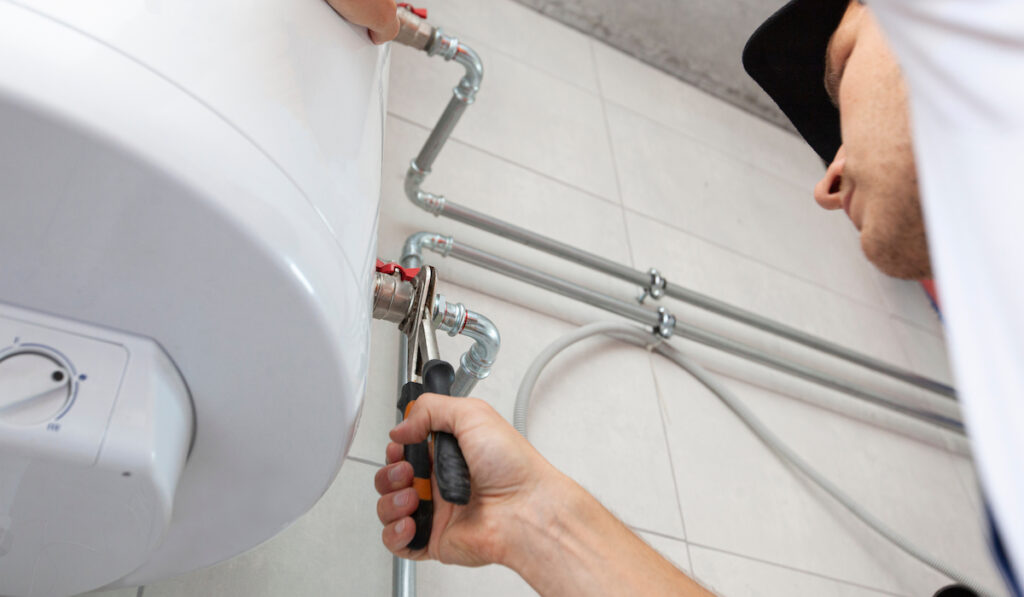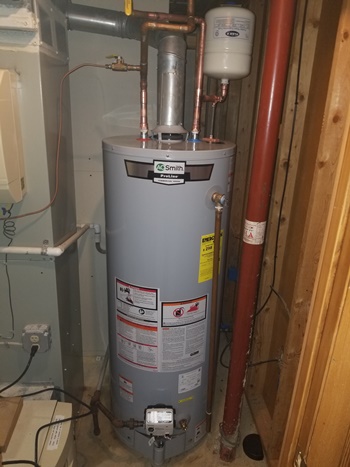Any individual is bound to have their own idea when it comes to What Kind of Maintenance Do Water Heaters Need?.

Hot water is vital for day-to-day comfort, whether it's for a refreshing shower or cleaning meals. To guarantee your warm water system runs successfully and lasts longer, regular maintenance is vital. This write-up provides useful tips and insights on just how to maintain your home's warm water system to stay clear of interruptions and pricey repairs.
Introduction
Keeping your home's hot water system may appear difficult, however with a couple of straightforward steps, you can guarantee it operates smoothly for several years to come. This guide covers whatever from recognizing your warm water system to DIY upkeep pointers and knowing when to employ specialist help.
Value of Keeping Your Hot Water System
Routine upkeep not just expands the lifespan of your hot water system however additionally guarantees it runs successfully. Neglecting maintenance can bring about decreased efficiency, higher energy expenses, and also early failure of the system.
Signs Your Hot Water System Demands Upkeep
Recognizing when your warm water system needs attention can avoid significant problems. Watch out for indications such as inconsistent water temperature, unusual noises from the heating unit, or corroded water.
Recognizing Your Hot Water System
Before diving into upkeep jobs, it's handy to recognize the standard parts of your warm water system. Typically, this includes the hot water heater itself, pipelines, anode rods, and temperature controls.
Monthly Maintenance Tasks
Routine regular monthly checks can assist catch minor problems before they escalate.
Purging the Hot Water Heater
Purging your water heater removes debris build-up, enhancing efficiency and extending its life.
Checking and Replacing Anode Rods
Anode poles stop rust inside the tank. Inspecting and changing them when worn is essential.
Inspecting and Readjusting Temperature Level Settings
Adjusting the temperature level settings guarantees optimum efficiency and safety and security.
DIY Tips for Maintenance
You can carry out several maintenance jobs on your own to maintain your hot water system in top problem.
Checking for Leaks
Routinely inspect pipes and links for leakages, as these can result in water damages and higher bills.
Checking Pressure Alleviation Valves
Evaluating the stress relief valve guarantees it works appropriately and avoids excessive stress build-up.
Protecting Pipes
Shielding warm water pipes reduces warm loss and can save power.
When to Call a Professional
While do it yourself maintenance is helpful, some concerns need specialist proficiency.
Facility Issues Calling For Professional Aid
Examples consist of significant leaks, electric issues, or if your water heater is continually underperforming.
Regular Professional Upkeep Advantages
Specialist upkeep can consist of comprehensive assessments, tune-ups, and making certain conformity with safety and security requirements.
Verdict
Regular upkeep of your home's warm water system is important for efficiency, long life, and cost financial savings. By following these pointers and knowing when to look for professional aid, you can ensure a reputable supply of warm water without unanticipated disruptions.
Water Heater Maintenance: The Basics
Maintaining your water heater will ensure it operates efficiently and has a longer lifespan. Neglecting regular maintenance can lead to costly repairs and an even bigger chunk of your savings if you have to replace it sooner than necessary. But there’s good news: Most water heater maintenance tasks are relatively simple and easy for homeowners with basic DIY skills.
Flush the Water Heater
Over time, sediment and minerals can build up in the tank, reducing its efficiency and potentially causing damage. To flush the tank, turn off the power or gas supply, attach a hose to the drain valve near the bottom and open the valve to drain the water until it runs clear. Ideally, flush the tank annually.
Replace the Anode Rod
The anode rod is a sacrificial metal rod that helps prevent corrosion inside the tank. Inspect and replace it every three to five years or per the manufacturer's recommendation. To replace the anode rod, turn off the power or gas supply, drain a few gallons of water from the tank, unscrew the old rod and replace it with a new one. If the anode rod is significantly corroded or covered in calcium buildup, it's a sign the water heater may need to be replaced soon.
Tune-Up
A yearly tune-up can help identify potential issues and ensure your water heater operates at peak efficiency. This typically involves checking the thermostat, burner assembly (for gas heaters) and any other components specified by the manufacturer. During a tune-up, the technician may also clean the burner and adjust the pilot light (for gas heaters) or examine the heating elements (for electric heaters).
How to Maintain Your Water Heater
- Insulate the tank. Insulating the tank can improve energy efficiency and reduce heat loss, saving you money on energy bills. You can purchase precut insulation blankets designed specifically for water heaters or use standard fiberglass insulation wrapped securely around the tank.
- Check the temperature. The recommended water temperature for most households is around 120 degrees Fahrenheit (49 degrees Celsius). Higher temperatures can increase energy costs and potentially cause scalding. Use a kitchen thermometer to check the temperature at the faucet nearest the water heater.
- Monitor water pressure. Excessive water pressure can strain the water heater and cause leaks or even tank failure. Install a pressure-reducing valve if necessary. The ideal water pressure range is between 60 and 70 PSI (pounds per square inch).
- Test the temperature and pressure (T&P) relief valve. The T&P relief valve is a safety feature that releases pressure if the tank gets too hot or the pressure builds up too high. Test it annually by lifting the lever and allowing a small amount of water to release. Replace the valve if it doesn't release water or reseal properly.
- Check for leaks. Regularly inspect the tank, pipes and fittings for leaks or corrosion. Deal with issues promptly to prevent further damage. Even a small leak can lead to significant water damage over time.
- Consider a tankless water heater. If your traditional tank-style water heater is nearing the end of its lifespan ( typically 10 years), consider replacing it with a tankless water heater. These units heat water on demand, reducing standby energy losses and potentially saving you money on your energy bills.
- Schedule professional maintenance. While homeowners can perform many water heater maintenance tasks, it's still a good idea to schedule professional maintenance every few years. A plumber or HVAC technician can thoroughly inspect the unit, identify potential issues and ensure it operates safely and efficiently.
https://www.homeserve.com/en-us/blog/home-improvement/hot-water-heater-maintanence/

We were shown that editorial about Tips on Maintaining a Water Heater from an associate on another website. Liked our write-up? Please quickly share it. Let other people discover it. I recognize the value of reading our article about Water Heater Maintenance Tips You Can't Afford to Forget.
Call Us Now
Comments on “Maintaining Your Home's Hot Water System: Essential Tips”